Week 7#
Lecturer: Uma Maheswari, Faculty for BITS Pilani WILP
Date: 4/Sep/2021
Topics Covered#
- Query Languages
- Relational Algebra
- SELECT Operation
- PROJECT Operation
- TYPE COMPATIBILITY
- UNION Operation
- INTERSECTION Operation
- SET DIFFERENCE Operation
- Some properties for UNION, INTERSECTION and SET DIFFERENCE operations
- CARTESIAN (Cross Product) Operation
- RENAME Operation
- JOIN Operation
- OUTER UNION Operation
- Complete Set of Relational Operations
- DIVISION Operation
- Aggregate Functions and Grouping Operation
- Tutorial Session
- Post Lecture Notes
Query Languages#
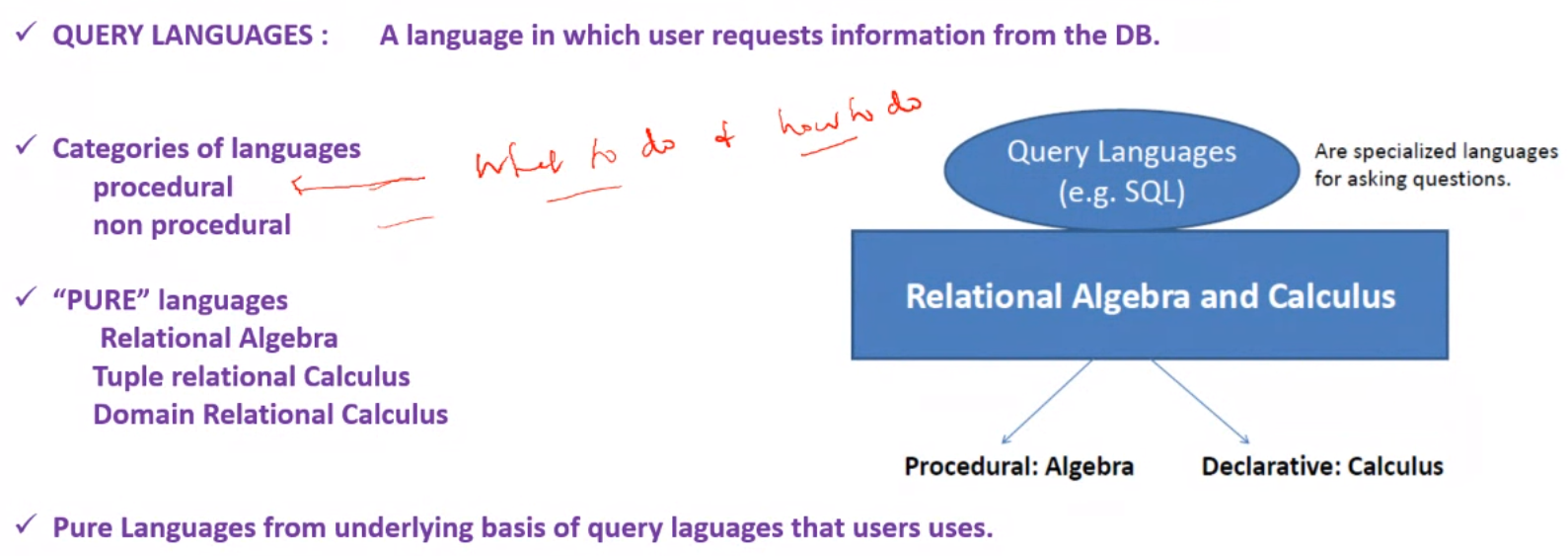
- Procedural: What to do and how to do
- Non Procedural: What to do
Relational Algebra#

Consider the example schema

Which is populated with these data
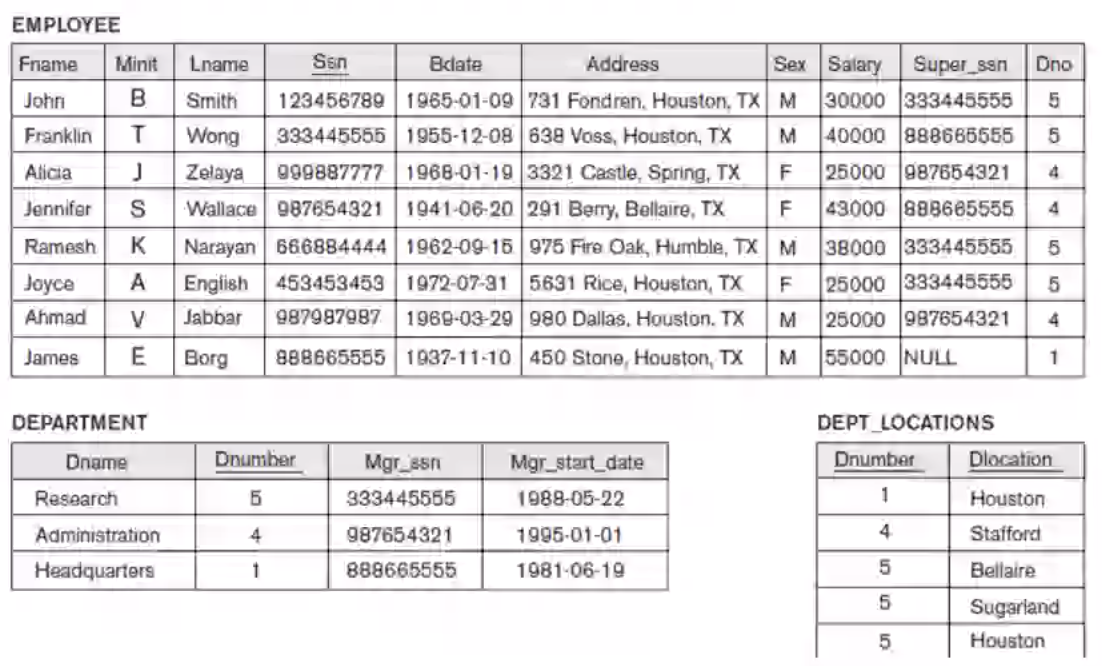
- The basic set of operations for the relational model is known as the relational algebra
- These operations enable a user to specify basic retrieval requests
- The reult of a retreival is a new relation, which may have been formed from on or more relations.
- A sequence of relational algebra operations forms a relational algebra expression, whose result will also be a relation
SELECT Operation#
Select operation is used to select a subset of the tuples from a relation that satisfy a selection condition. The select operation is denoted by a sigma letter
\(\sigma_{DNO} = 4 (EMPLOYEE)\) (This represents all employees in department 4)
\(\sigma_{SALARY} \gt 30000 (EMPLOYEE)\) (This represents all employees in with salary greater than 30000)
Properties#
- SELECT is commutative
- A cascade SEKLEECT operation may be applied in any order
\(\sigma_{<condition\ 1>}(\sigma_{<condition\ 2>}(R))\) \(=\) \(\sigma_{<condition\ 2>}(\sigma_{<condition\ 1>}(R))\) - A cascade SELECT operation can be
\(\sigma_{<condition\ 1>}(\sigma_{<condition\ 2>}(\sigma_{<condition\ 3>}(R)))\) \(=\) \(\sigma_{<condition\ 2>}(\sigma_{<condition\ 3>}(\sigma_{<condition\ 1>}(R)))\) - A cascade can also be written as:
\(\sigma_{<condition\ 1>}(\sigma_{<condition\ 2>}(\sigma_{<condition\ 3>}(R)))\) \(=\) \(\sigma_{<condition\ 1>}(\sigma_{<condition\ 2>}(\sigma_{<condition\ 3>}(R)))\)
Example#
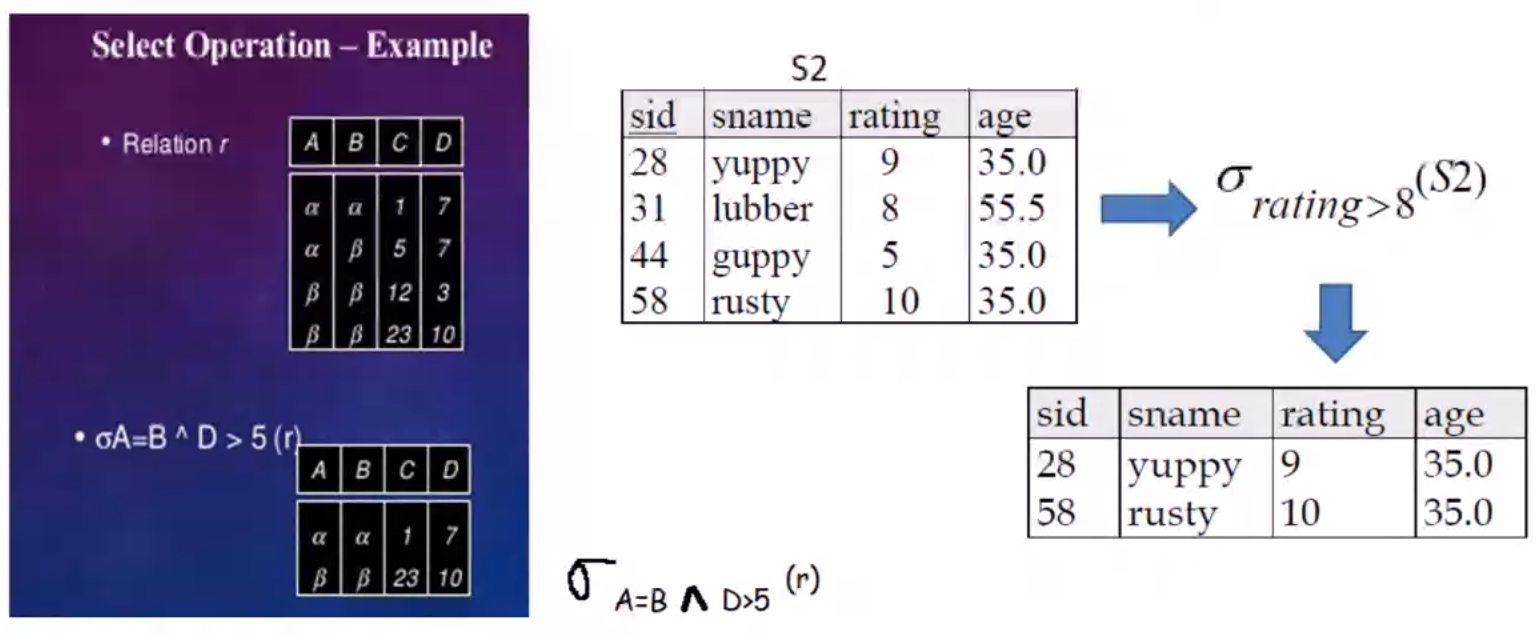
PROJECT Operation#
This operation selects certain columns from the table and discards the rest. This is shown as the pi letter
\(\pi_{LNAME,\ FNAME,\ SALARY}(EMPLOYEE)\)
Properties#
- The number iof tuples in the result of projection \(\pi_{<list>}(R)\) is always less or equal to the number of tuples in R
- If the list of attributes
Example#
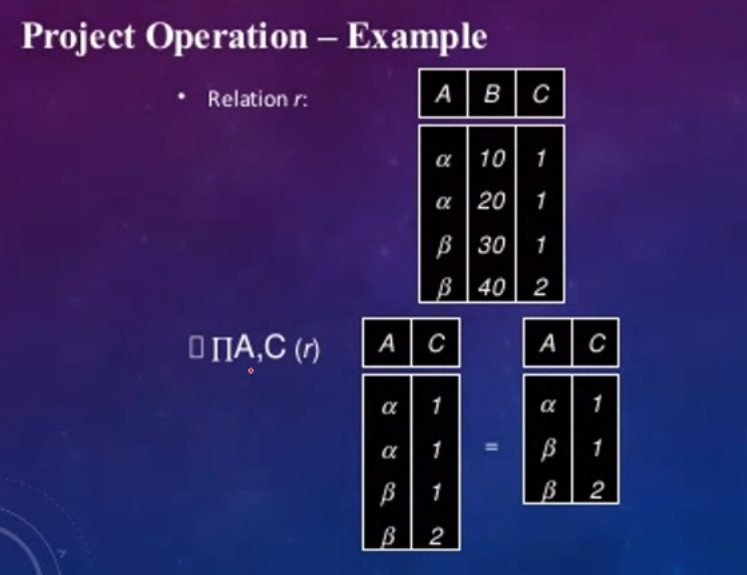
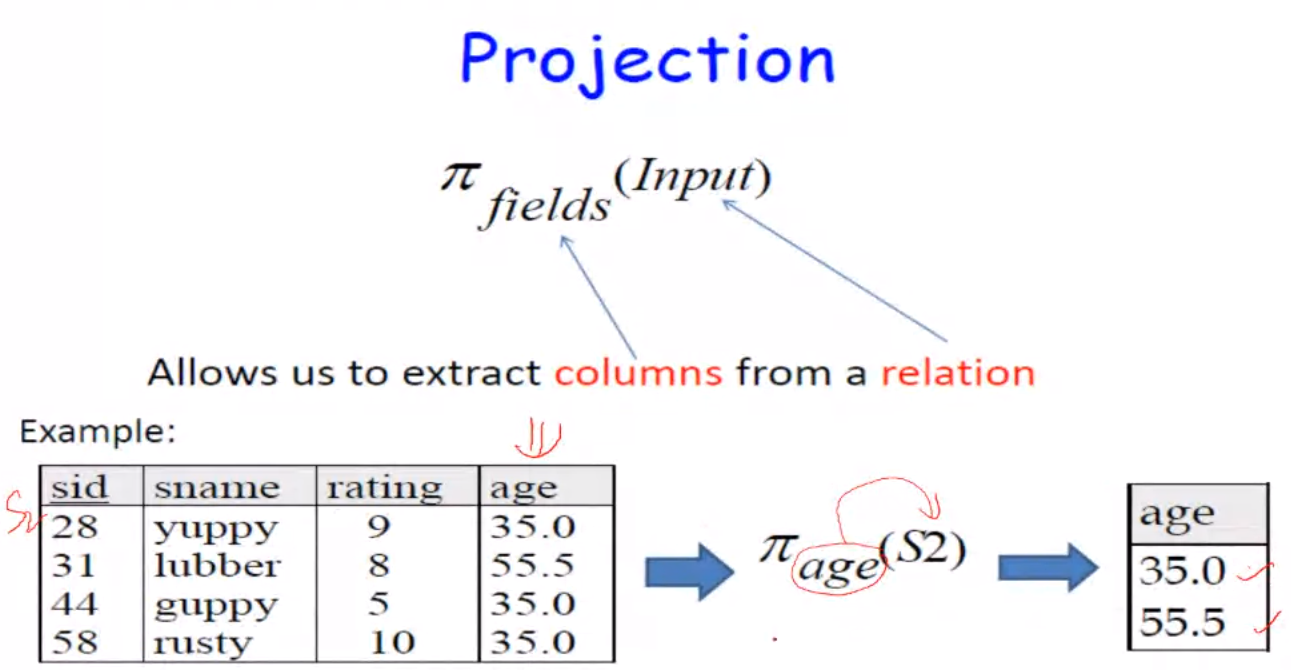
Combination of SELECT and PROJECT

TYPE COMPATIBILITY#
- The operand relations must have the same number of attributes and the domains of the corresponding attributes must be compatible
UNION Operation#
Denoted as \(R \cup S\), means that all the tuples of \(R\) and \(S\) will be accumulated together and any duplicates are thrown away
Example#


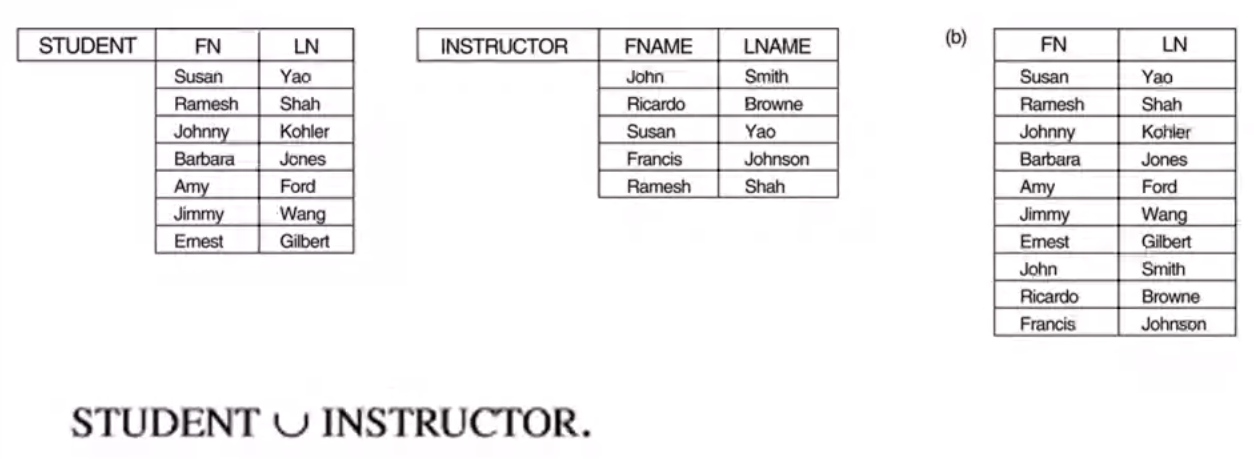
INTERSECTION Operation#
Denoted as \(R \cap S\), means that common tuples of \(R\) and \(S\) will be accumulated together and others are thrown away
Examples#
Consider the same example as the UNION operation, then intersection is:



SET DIFFERENCE Operation#
- The result of this operation denoted by \(R - S\) is a relation that includes all tuples that are in \(R\) but not in \(S\)
- Here order matters, meaning \(R - S\) need not be the same as \(S - R\)
Examples#
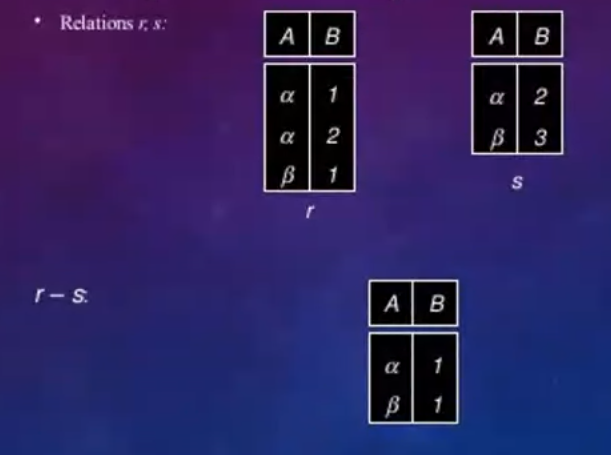
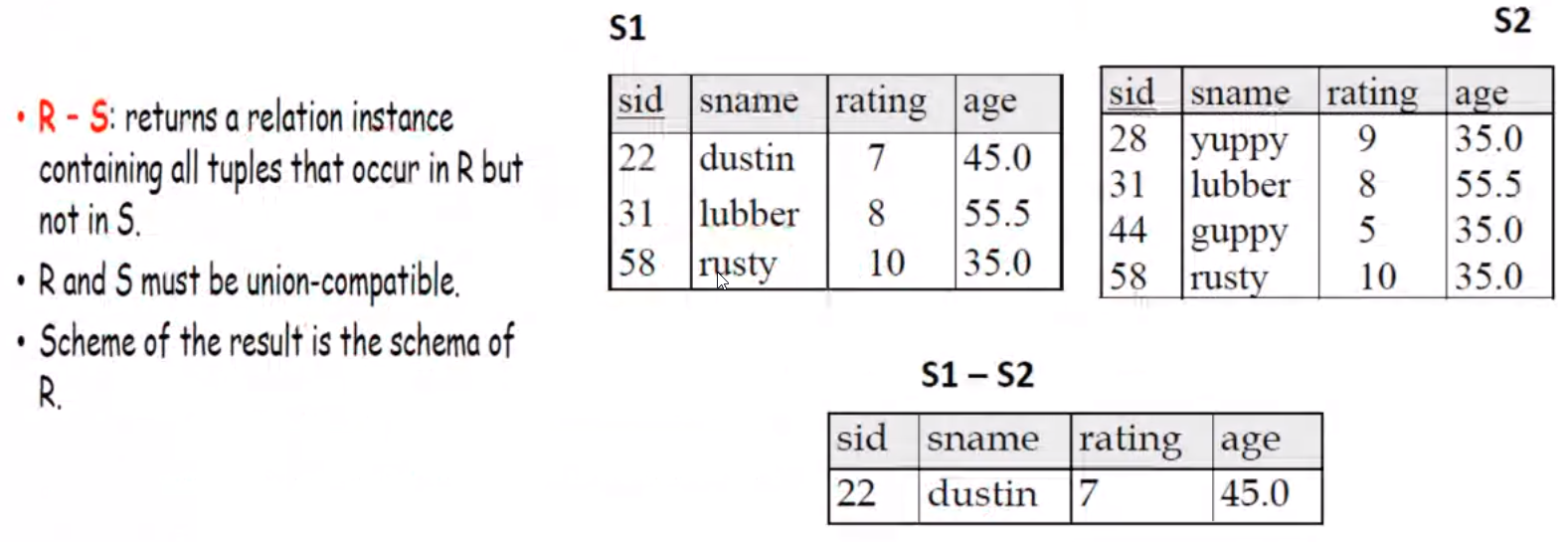
Some properties for UNION, INTERSECTION and SET DIFFERENCE operations#
\(R \cup S = S \cup R\)
\(R \cap S = S \cap R\)
CARTESIAN (Cross Product) Operation#
Cartesian product combines each and every row of the two relations. It is denoted by \(R x S\)
Examples#
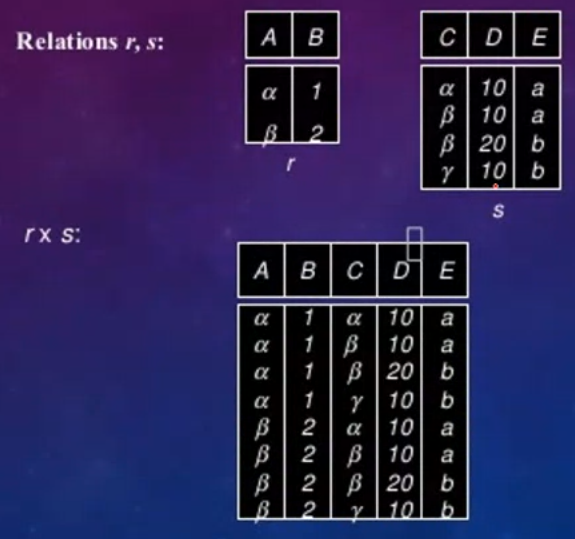

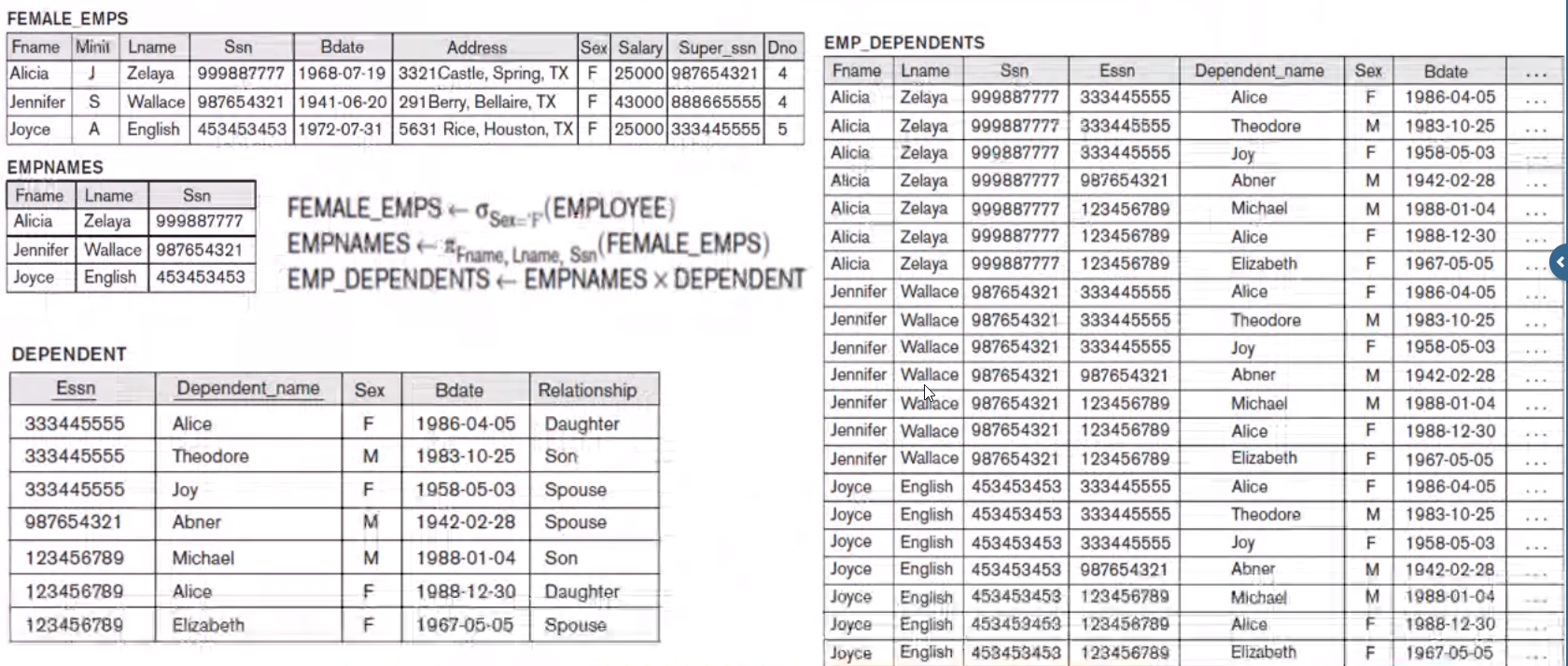
RENAME Operation#
- Name conflicts can arise in some situations

Examples#
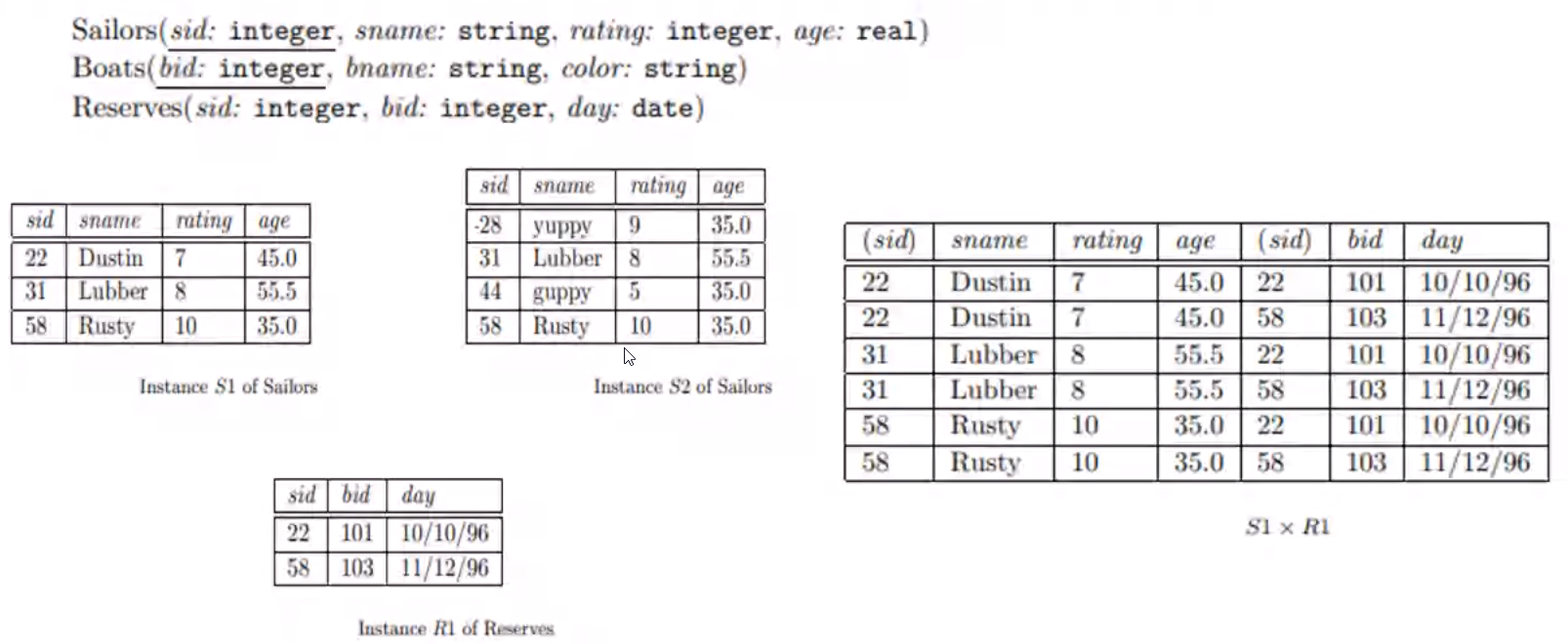

JOIN Operation#
Sequence of CARTESIAN Operation followed by a SELECT
Types of JOIN Operations#
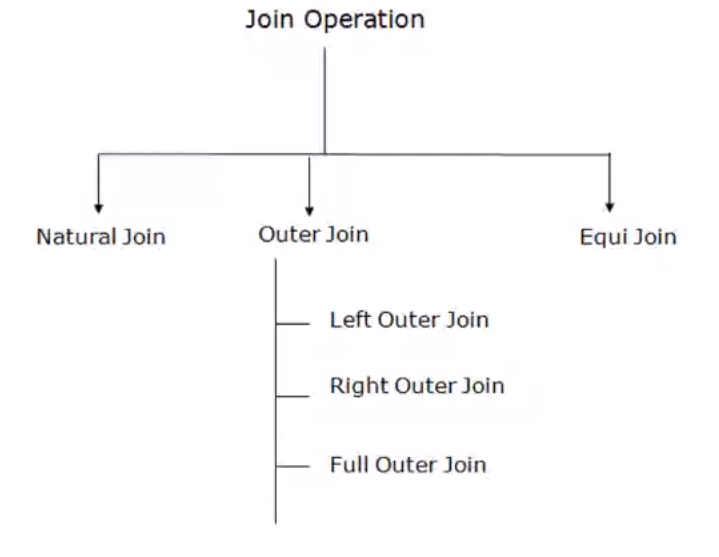
Conditional Join#
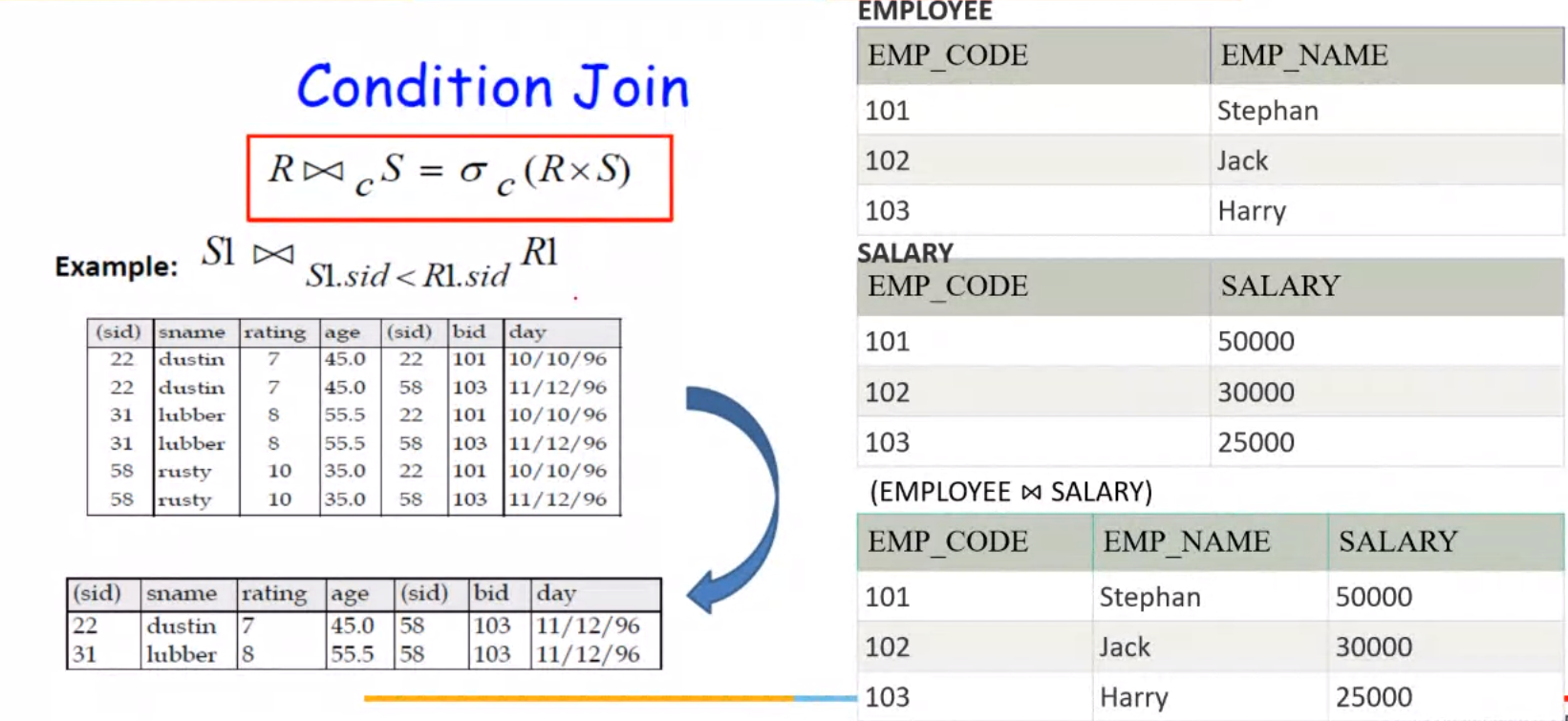
In the employee example the condition is \(EMPLOYEE.EMP\_CODE = SALARY.EMP\_CODE\)
Natural Join#
denoted as \(*\)
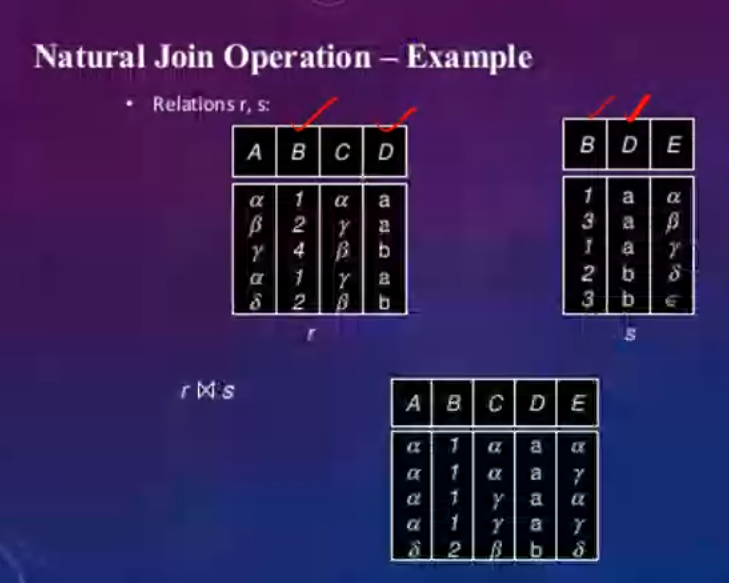
Join such that the tuples are equal on all the common attribute names
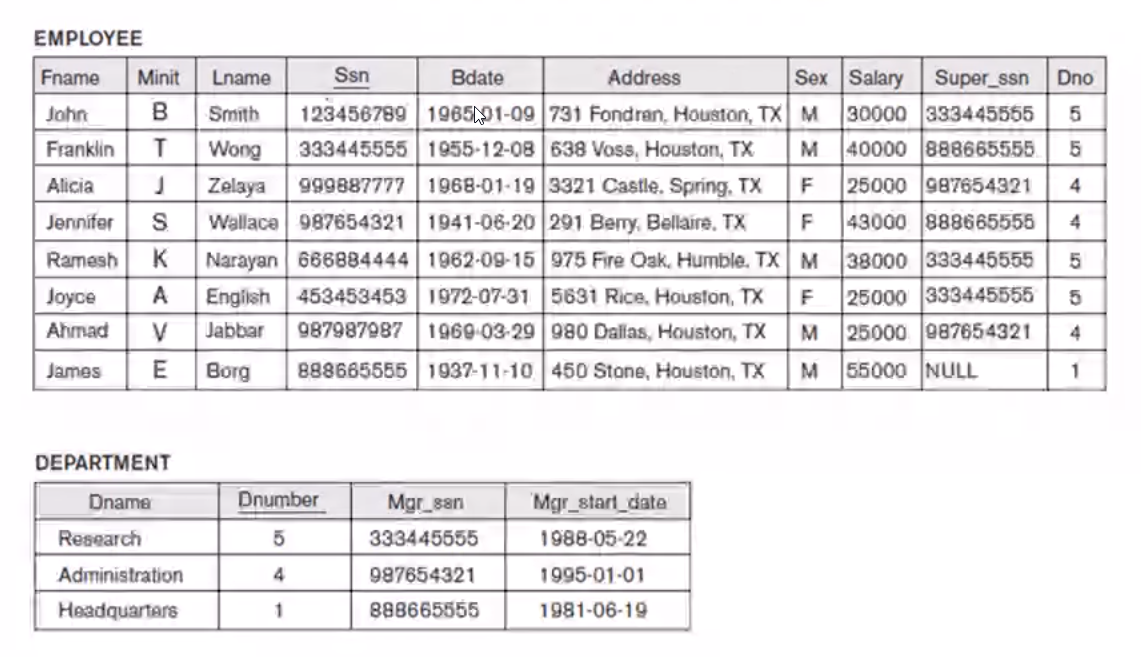

A Complete Example:
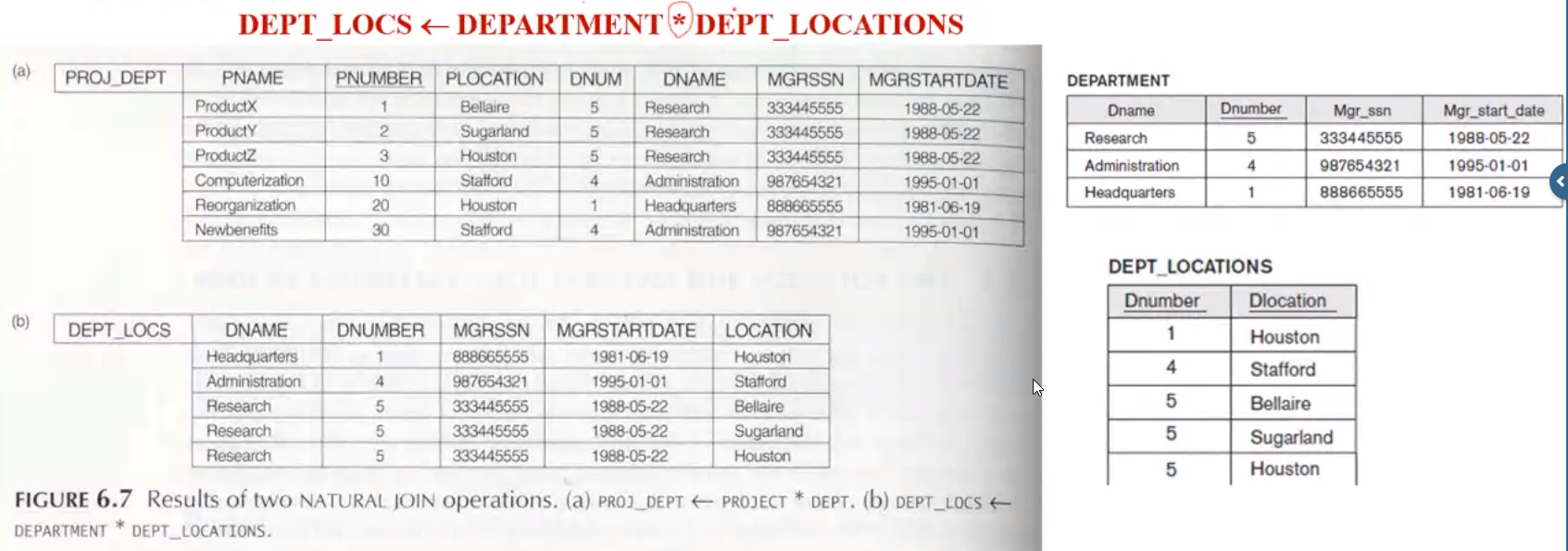
Equi Join#
A join where the only comparison operator used is \(=\). In the result of an EQUIJOIN we always have one or more pairs
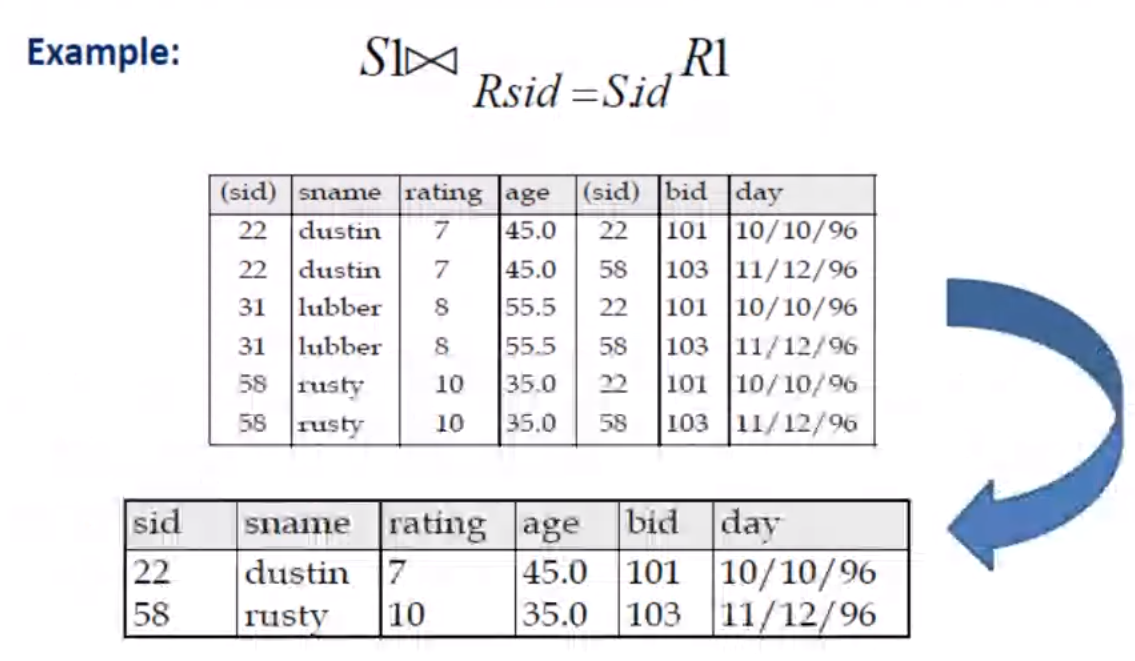
THETA Join#
Apart from \(=\) all the other comparison operators are also used
OUTER Join#
- Left Outer Join: Keeps every tuple in the first/left relation \(R\); if no matching tuple is found in \(S\), then attributes of \(S\) are given null values

-
Right Outer Join: Keeps every tuple in the second/right relation \(S\); if no matching tuple is found in \(R\), then attributes of \(R\) are given null values
-
Full outer join: Keeps every tuple in both the relations \(R\) and \(S\) and the rest are padded with \(null\)
OUTER UNION Operation#
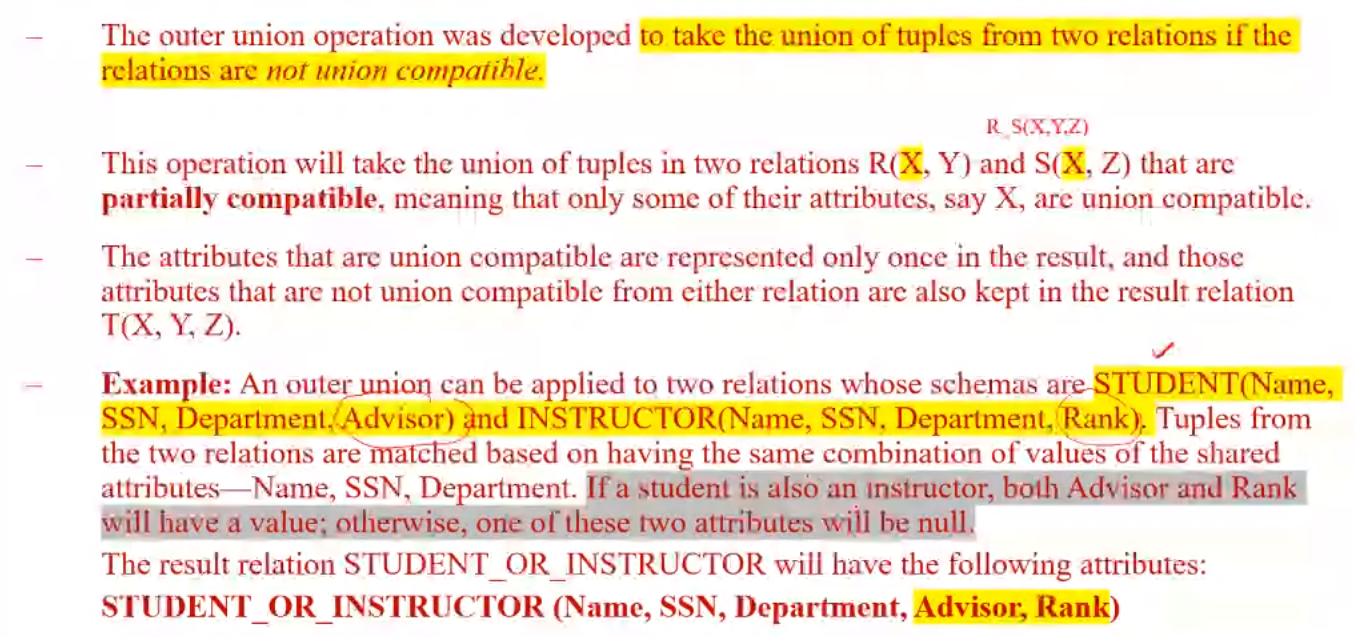
Complete Set of Relational Operations#

DIVISION Operation#
denoted by \(\div\)

Examples#
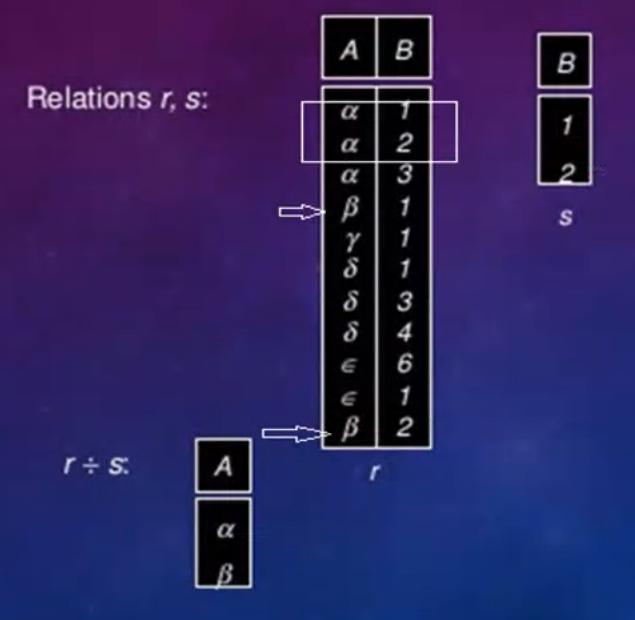
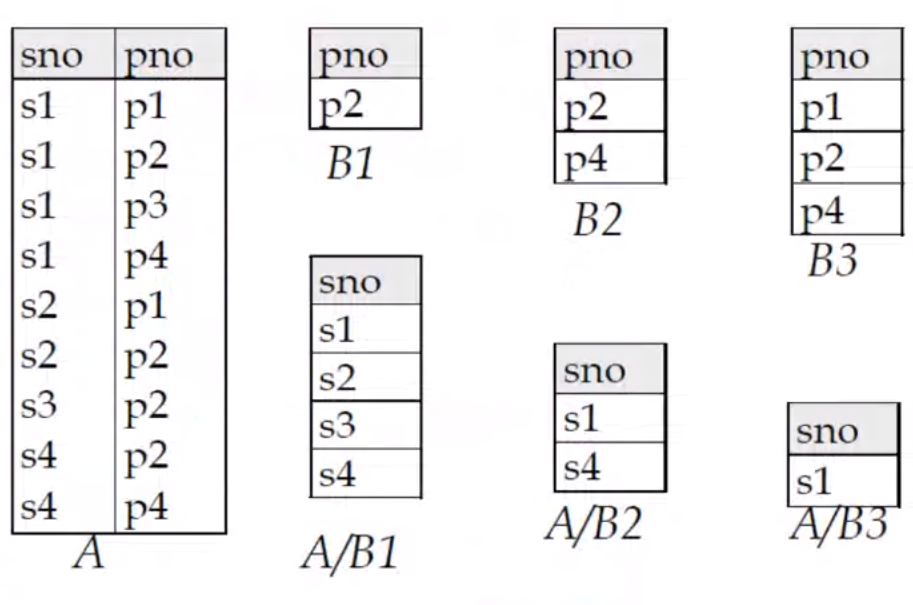
Another example
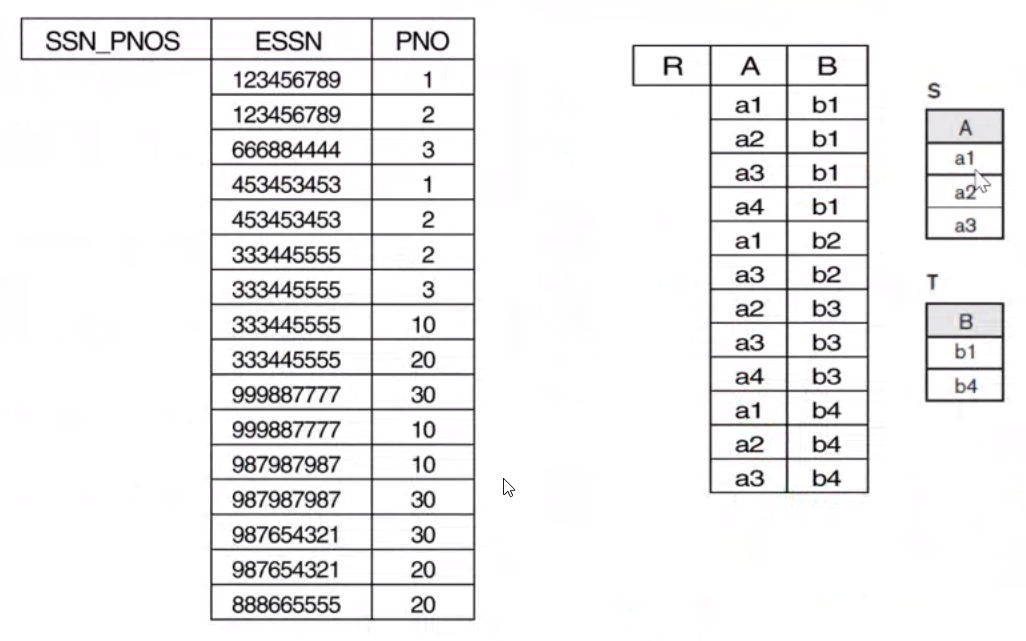
Aggregate Functions and Grouping Operation#


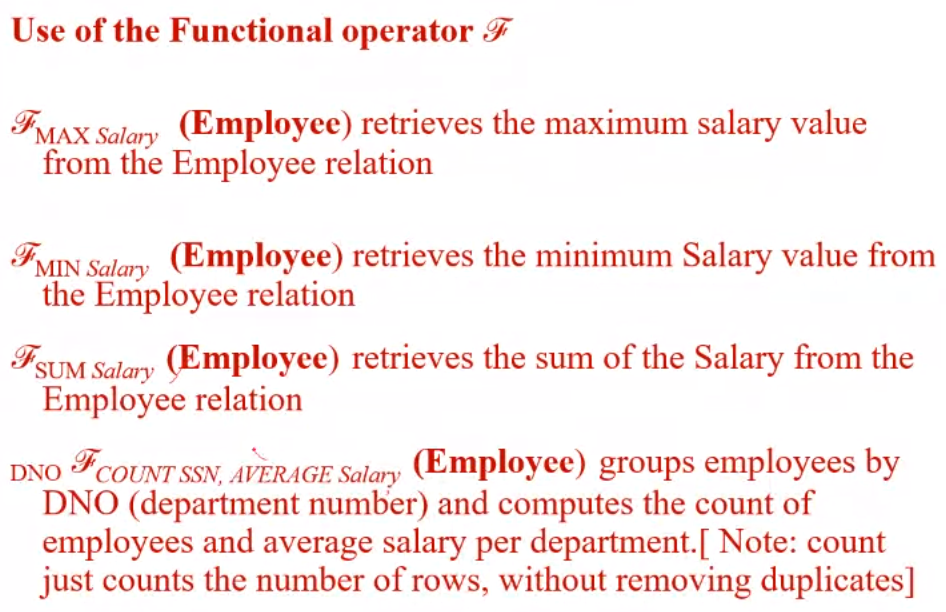
Tutorial Session#
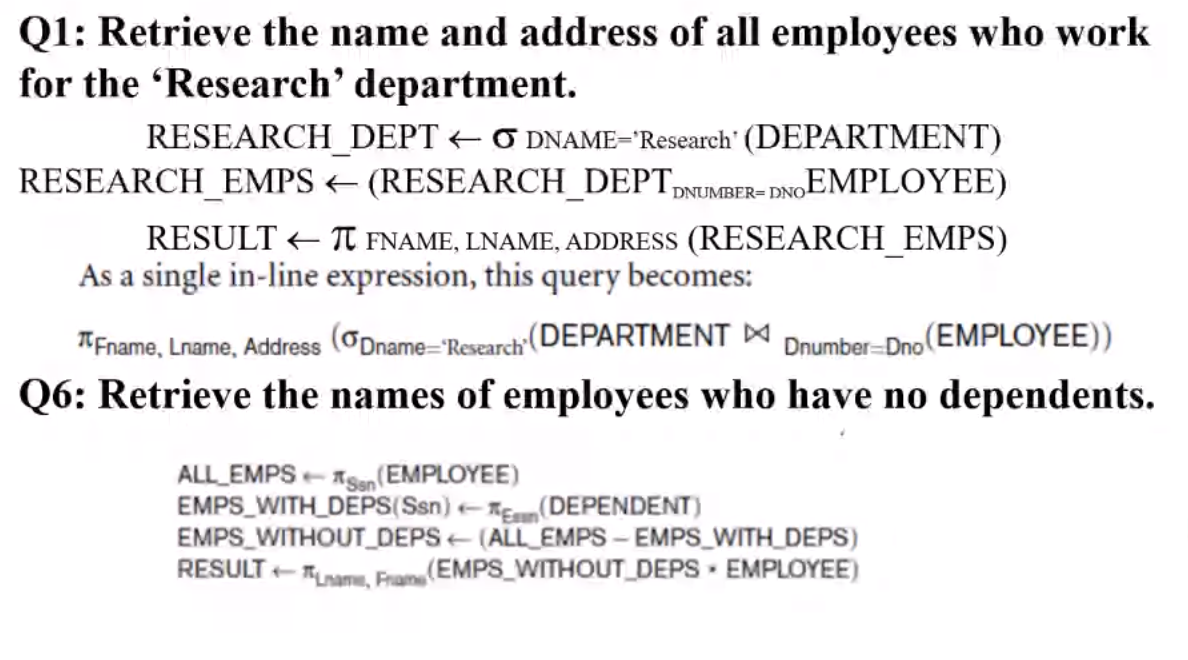


Post Lecture Notes#
- Go through the SQL slides for the next week
- Go through the example problems in the book for relational algebra
